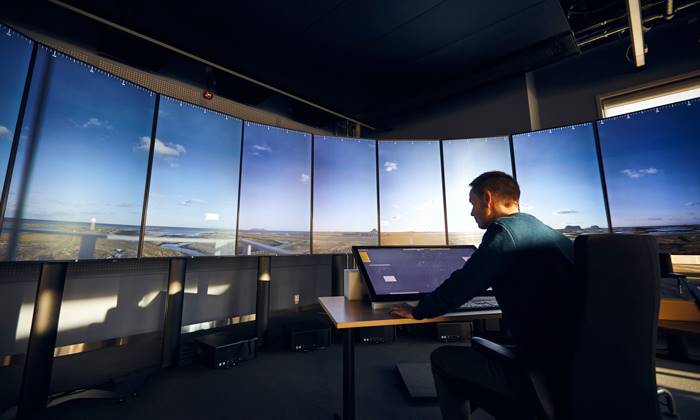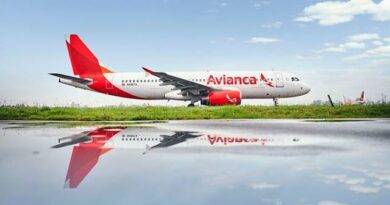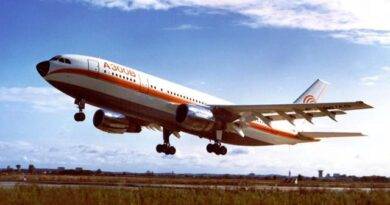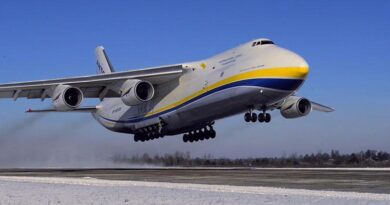Remote Towers / Virtual Towers Revolutionizing Air Traffic Control
What is remote tower and what are the first applications of remote tower services? What are the benefits of using remote tower? Let’s take a closer look at these issues.
The remote tower can sometimes be called as virtual tower. It is a relatively new concept for air traffic services, air traffic control services and flight information services. It refers to the provision of air traffic service from a specially designed location elsewhere, and not from the local air traffic control towers at the airport.

Remote towers work with the cameras placed at the airport, which can provide instant image flow and provide high resolution images, using the facilities of high technology. These camera systems provide a 360-degree view. In addition, cameras can be placed to closely monitor ramp operations. These images from high resolution digital cameras are projected onto 360 degree digitized LCD screens. In this way, air traffic controllers have the real viewing angle they have in aerodrome control towers, as well in remote towers. All these aim to visually create the most realistic environment for the air traffic controller. In addition to these, many sensors and microphones are used for many and various purposes to bring the sound transmission as close to reality. With the help of these sensors and microphones, data about sound, meteorology and other environmental factors are obtained.
At first VMC operations have been taken into consideration in the development of this technology. However, it seems possible to produce solutions for night and low vision operations. Infrared technology, night vision lenses, and the use of the A-SMGCS system, if needed, can create solutions.
First Operational Remote Tower Service
The world’s first operational approval for routine provision of Remote Tower Service was given to Swedish ANSP LFV by the Swedish Transport Agency Transportstyrelsen on 31 October 2014. This approval was then first used for ATS at Örnsköldsvik Airport at 21 April 2015.
Studies on the remote tower concept have been embraced by many authorities and attracted great attention. We can say that German ANSP DFS and Swedish ANSP LFV are doing important work on this subject.
Different usage areas are also considered in addition to the usage method where remote tower systems completely take over the function of local control towers.
Supplementary use of RTS is one of these areas. Considering the rapidly developing aviation, new runways, new aprons and terminals are being built at some busy airports. In such cases, the use of RTS for support purposes in integration with the existing system is among the solution methods.
Considering the Contingency Use of RTS dynamic and continuous air traffic flow, it becomes clear that measures should be taken against emergency situations. RTS seems to be a good solution as an emergency plan in cases where the local air traffic control tower may be out of service, such as fire, earthquake or the like.
LFV Air Navigation Services of Sweden summarized the benefits of using remote tower as follows:
- Provision of cost-efficient Air Traffic Services
- Opportunity for airports with low traffic density
- Co-location of ATS services means more efficient use of staff and infrastructure
- Alternative to new construction or refurbishment
- ATS on demand – Flexible opening hours to meet customer requirements
- Easy to upgrade operational level from AFIS to ATC
- The ability to provide 24/7 SAR operation and medical evacuation capability at any type of airport
- Enhancement of safety through new technology
- Low cost contingency solutions
Multiple Remote Tower Operations (MRTO): Revolutionizing Air Traffic Control Efficiency
Remote tower technology is transforming the aviation industry by introducing Multiple Remote Tower Operations (MRTO). This innovative approach allows a single air traffic controller to manage multiple airports either simultaneously or sequentially, significantly optimizing resource utilization. MRTO enhances operational efficiency, reduces costs, and ensures consistent service levels for low-traffic airports. By leveraging advanced camera systems and real-time data integration, this technology is paving the way for smarter, more flexible air traffic management. Embracing MRTO means not just adapting to change but leading it, ensuring airports remain competitive in a dynamic aviation landscape.


